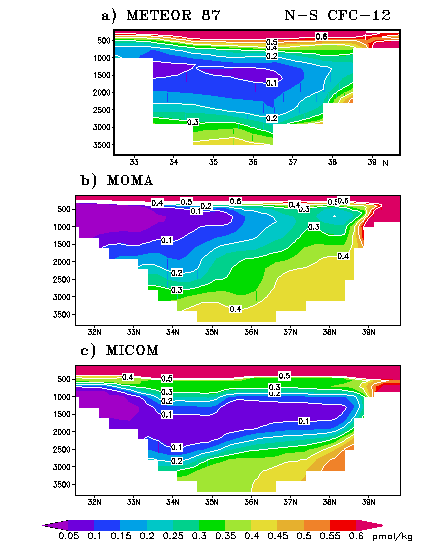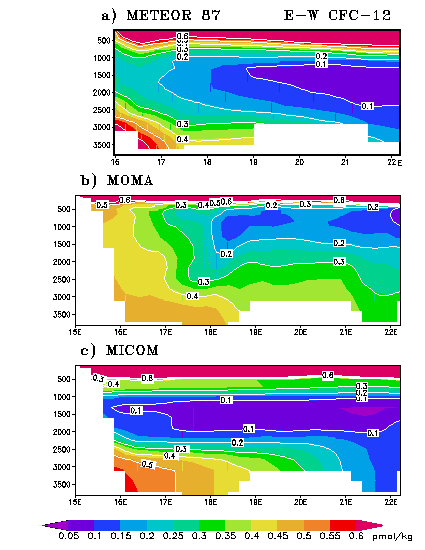Submitted to DSR (1999)
Isopycnic and cartesian model simulations for the overflow and spreading of dense water are compared with each other and with independent transient tracer observations. This case study is performed for Adriatic dense water overflowing into the deep Eastern Mediterranean with chlorofluoromethane (CFC-12) observations used to test the model simulations. The realism of both types of model simulation depends on the representation of diapycnal mixing. In the cartesian model, convective adjustment and mixing dilute the overflow of Adriatic dense water and lead to unrealistic vertical homogenisation. Incorporating a modified convection scheme emphasising the sinking of dense fluid, rather than its mixing, leads to a more realistic penetration of the dense overflow. In the isopycnic model, there is an improved simulation of the overflow, which leads to the density contrast of the deep Mediterranean waters being maintained. However, there is too low a CFC-12 concentration at mid-depths unless explicit diapycnal mixing is incorporated. Differences in the simulated tracer fields in the two models are also partly due to differences in the barotropic circulation arising from the different interaction between the dense overflow and the topography.
Passive tracer modelling example
CFC-12 distribution in the Eastern Mediterranean simulated by cartesian (MOMA) and isopycnic (MICOM) models and compared with R/V "Meteor" observations in 1987 (Fig. 1a, 2a). Both models have similar resolution and sea-surface forcing.The source of dense waters in the Adriatic Sea is marked by high CFC-12 concentration (top-right of Fig. 1).

Figure 1:
CFC-12 distribution [pmol/kg] for a north-south section through the Ionian

Figure 2:
CFC-12 distribution [pmol/kg] for a east-west section through the Ionian
LINKS
- Physical Oceanography at the University of Liverpool
- MEDNET at the University of Liverpool
This page was made by V. Roussenov, University of Liverpool.
Last changed on July 14, 2000.